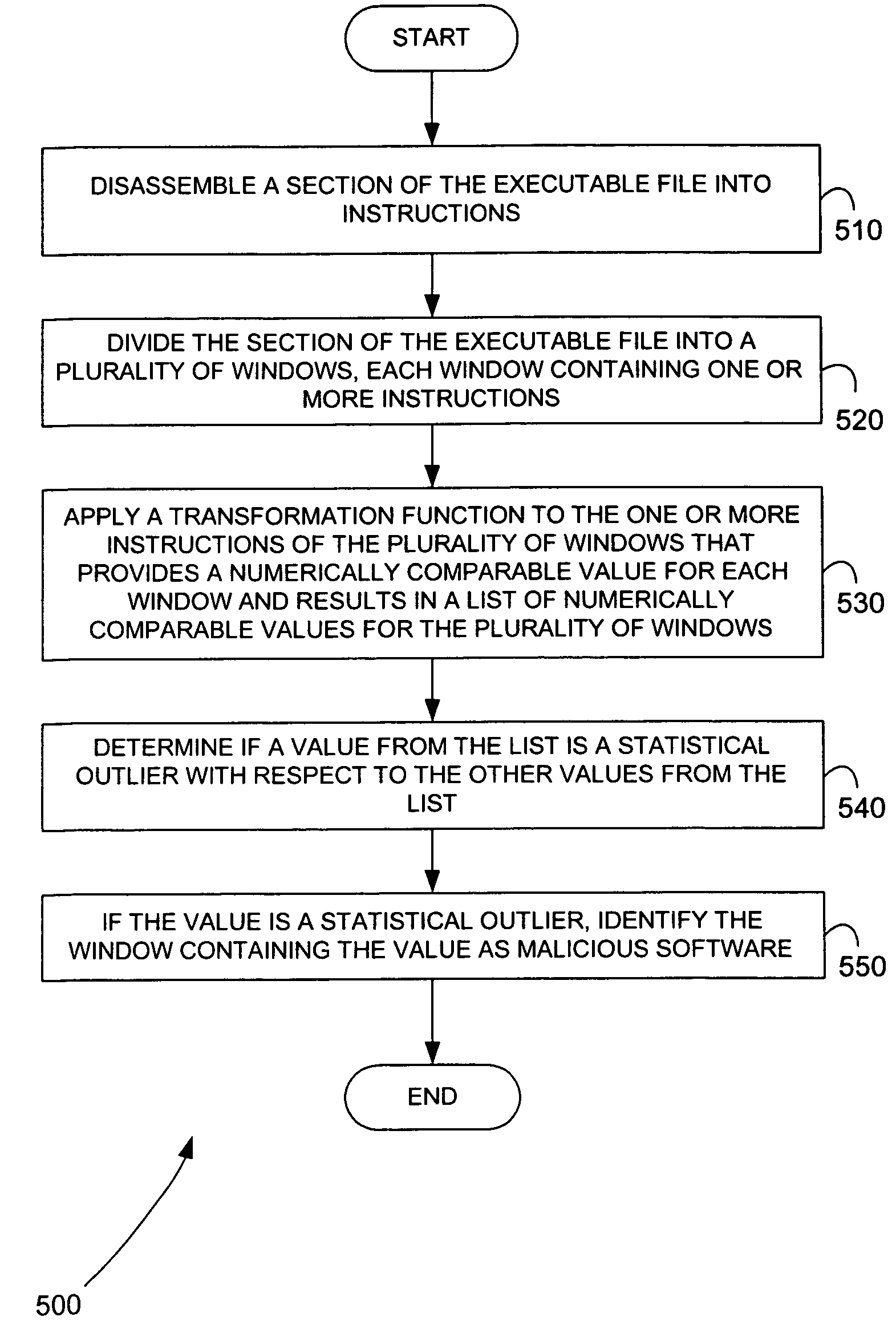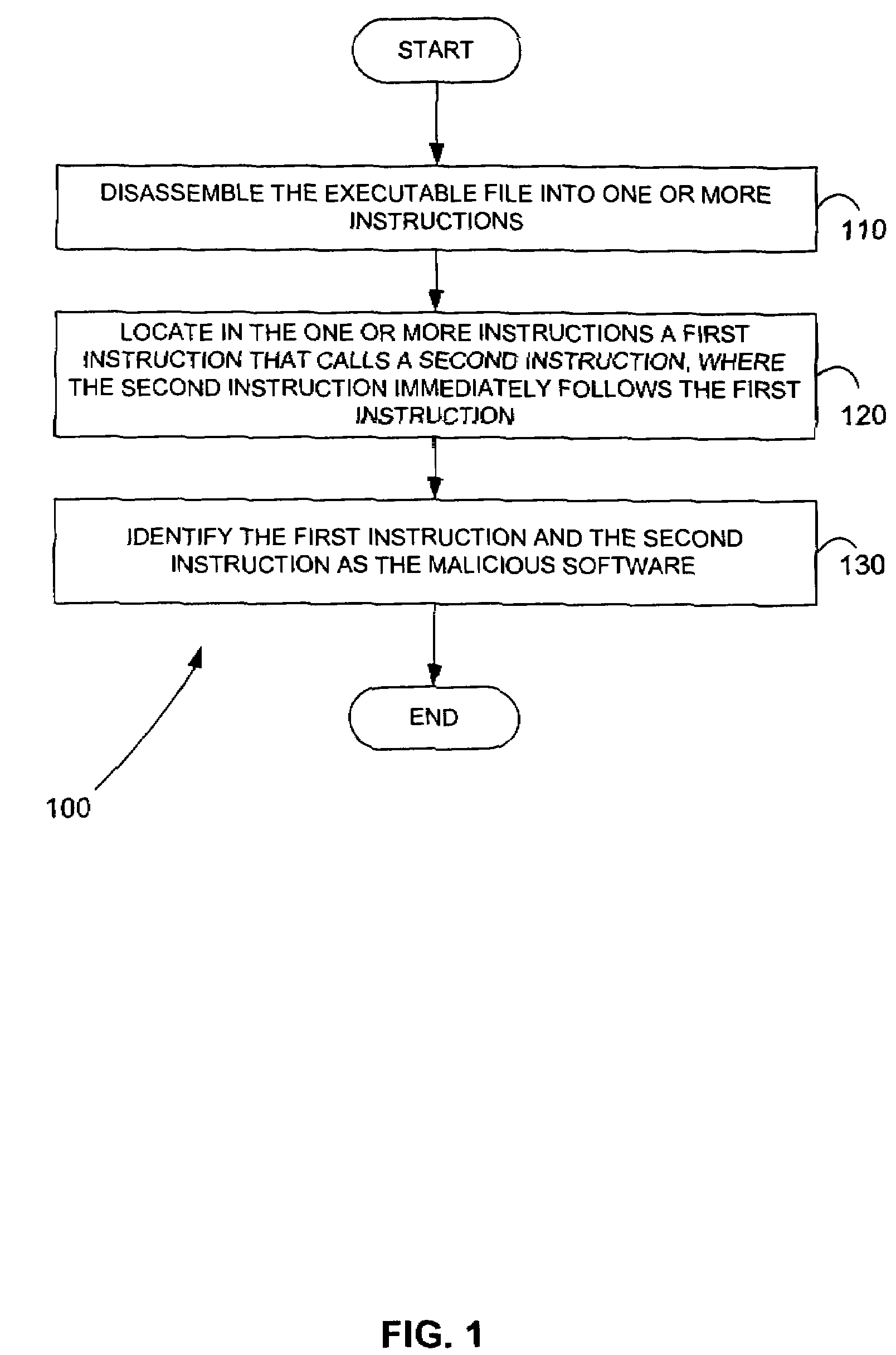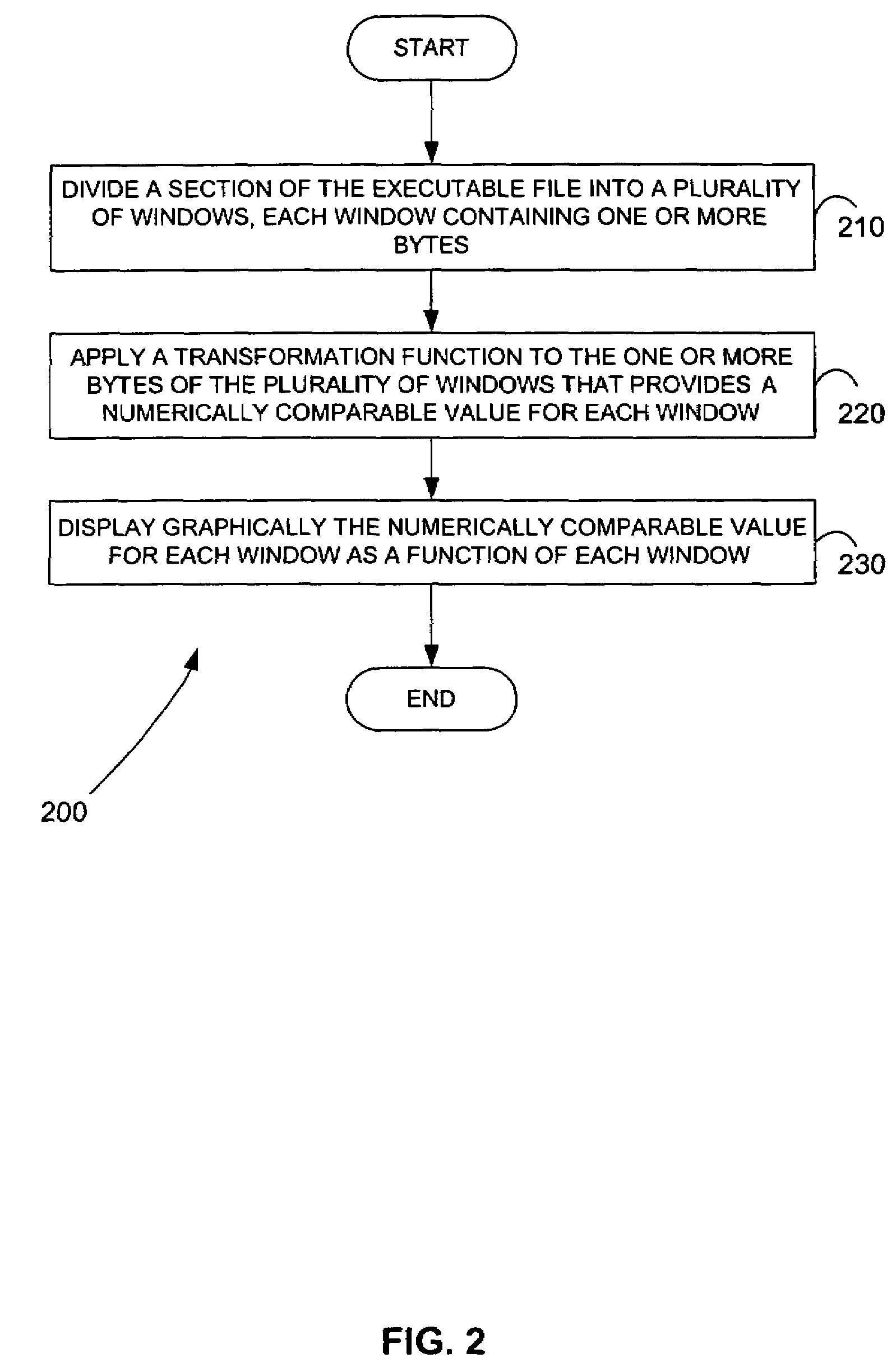Methods for identifying malicious software
a malicious software and detection method technology, applied in the field of malicious software detection, can solve the problems of detecting and analyzing dangerous programs, a costly and often inaccurate endeavor, and a less elegant but effective insertion method of simply overwriting parts
- Summary
- Abstract
- Description
- Claims
- Application Information
AI Technical Summary
Benefits of technology
Problems solved by technology
Method used
Image
Examples
Embodiment Construction
[0025]Embodiments of this invention differ from previous approaches to the malicious code problem, because they do not attempt to define or identify malicious behavior. Instead, they focus on structural characteristics of malicious executable code. These embodiments provide methods to examine any application, whether previously known or unknown, in order to determine if it has been tampered with since its original creation. Such tampering usually takes the form of an embedded virus or Trojan horse that is activated during subsequent executions of the executable program.
I. Identification of Inhomogeneous Regions of Binaries
[0026]One embodiment of the present invention provides an analyst with an array of tools to identify inhomogeneous regions of binaries within a host program. These tools are designed to locate structural features of executables that do not fit in with surrounding regions; i.e., regions of bytes that appear to have been inserted into an otherwise homogeneous binary ...
PUM
 Login to View More
Login to View More Abstract
Description
Claims
Application Information
 Login to View More
Login to View More - R&D
- Intellectual Property
- Life Sciences
- Materials
- Tech Scout
- Unparalleled Data Quality
- Higher Quality Content
- 60% Fewer Hallucinations
Browse by: Latest US Patents, China's latest patents, Technical Efficacy Thesaurus, Application Domain, Technology Topic, Popular Technical Reports.
© 2025 PatSnap. All rights reserved.Legal|Privacy policy|Modern Slavery Act Transparency Statement|Sitemap|About US| Contact US: help@patsnap.com



